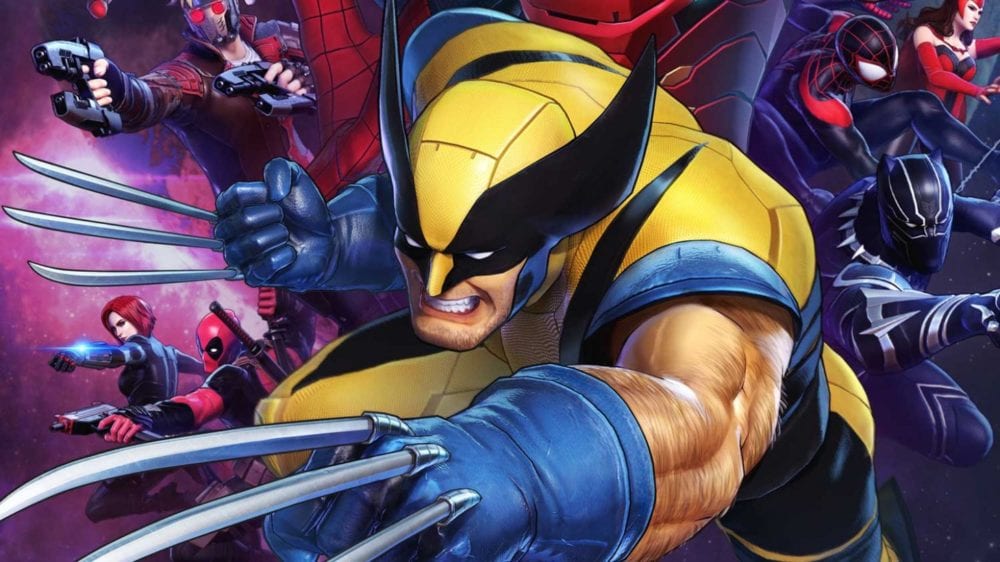When you think of superheroes you think of crazy powers and battles; the massive armageddon level battles of the MCU, or the panels bursting with color in comics. Video games oftentimes have trouble emulating the sheer craziness of superhero battles, but a few have gotten it right. Well, I have good news, you can add Marvel Ultimate Alliance 3 to that list.
The past two Ultimate Alliance games had engaging combat systems that expanded upon what X-Men Legends II: Rise of Apocalypse started, letting you bring a team of four heroes into battle, combining their powers to devastating effect.
Ultimate Alliance 3 runs with that same idea but amps everything up to 11, in the way only Team Ninja, the makers of Ninja Gaiden, could. At its core the new game feels very much like the old games did, letting you swap between any of your four heroes on the fly.
You have a light attack on X, a heavy attack on Y, and up to four skills set on R+face buttons. These options make up the bread and butter of your combat repertoire, and it seems incredibly simple on its face, but Ultimate Alliance 3 has a way of layering in complexities and options to make things exciting.
Every character only has one combo to use for light attacks and one heavy attack, but their abilities are incredibly different. Attacks are grouped into different kinds of damage (i.e. melee, piercing, ethereal, projectile) and many of the characters in the game are based around these ideas. Let’s talk about a few heroes as examples.
Certain characters, like Hawkeye, are ranged characters that cause piercing damage. All of Hawkeye’s attacks let him blast enemies from a distance, but he doesn’t have any melee attacks, meaning you’ll want to always keep your distance and pepper enemies.
Black Panther, on the other hand, is an entirely melee-focused fighter, whose agility is his greatest asset. Black Panther’s attacks and abilities are all built around letting him leap across the battlefield, jumping from one enemy to another with a flurry of swipes.
Past that, Magneto is a pseudo-ranged character whose magnetism attacks are entirely focused on grouping enemies together, setting up the potential for combos from other heroes.

By combining these different types of heroes you can cause some real havoc on the battlefield, and each and every character in the game feels unique and distinct. To further that idea each character levels up independently, and has the ability to rank up their abilities and equip ISO-8 crystals that can boost a variety of skills or stats, letting you customize each character even more.
Where things really get interesting, however, is with Synergy attacks and Ultimate Alliance Extreme attacks. Team Ninja has taken the fusion attacks of past games one step further in Ultimate Alliance 3, letting heroes’ abilities interact at any time.
Almost every hero can have a Synergy attack with another in some way, and when two characters launch compatible moves it’ll cause an explosive effect bumping up the damage and blowing back enemies.
What’s really great about Synergy is that it’s super easy to use the moves, especially in single-player. While playing you can hold down ZR, instead of R, to open Synergy abilities. The game dynamically adjusts to any nearby heroes, lighting up which ability will work with them, and letting you launch it instantaneously.
The AI does a great job of cooperating when you activate a Synergy attack, and the game always wants to make sure you have the power. At the same time, Synergy attacks will simply happen as you’re fighting and using abilities, but it’s great to have an option to instantly launch them at any time.
Extreme attacks, on the other hand, build up as you deal and take damage, building a gauge around your character portrait. When full, you can launch that character’s Extreme ability that devastates nearby enemies. If multiple characters have their Extremes ready you can launch them at the same time, creating a blinding display of particle effects and flying enemies.

Again, character’s Extremes are built around different functions, and I’ve had an absolute blast figuring out which ones work best together. My favorite combination so far is using Magneto to pull in all nearby enemies, Spider-Man to web and damage them, then characters like Black Panther or Captain America to hit the entire group that gets sucked in and webbed.
The sheer amount of destruction onscreen can be ridiculous and cause the game to slow down for a tick, but then it goes right back into the action. On that topic, Ultimate Alliance 3 runs incredibly well almost all the time.
Whether I was playing in TV or handheld mode the game ran at a breakneck pace, with only the resolution taking a hit in handheld. The general speed is much faster than the past two Ultimate Alliance games, and a new “Heroic” camera style makes it feel closer to your typical action game, rather than the top-down style.
Ultimate Alliance 3’s story keeps throwing new enemies and bosses at you that have unique attacks and features, and every chapter feels unique in terms of the enemies you’ll be facing.
It’s certainly an arcade-y experience, and one that may seem to lack depth at first. However, as you dig deeper into Ultimate Alliance 3 and start thinking about team composition and building your characters there’s a surprising amount of depth to be found.
It may not be a huge leap from the past games, but boy if it isn’t the best version of Ultimate Alliance we’ve seen yet. Stay tuned for our full impressions on Marvel Ultimate Alliance 3 later this week.
